What Hi-Fi? Verdict
Even at this price, this JVC projector is a bargain. It offers a decent slice of the range-topping performance at a fraction of the cost
Pros
- +
Deep blacks
- +
Excellent HDR handling
- +
Brilliant colour control
Cons
- -
Add-on required for 3D
- -
No full-screen SD upscaling
Why you can trust What Hi-Fi?
JVC’s D-ILA projectors have long been some of the best premium performers around. The current range-topper costs around £35,000 ($35,000, AU$40,000), but you don’t need to be in financial super-yacht territory to get a taste of the company’s native 4K fun. Enter the JVC DLA-N5, the baby of the family.
D-ILA is JVC’s own name for its liquid crystal on silicon (LCoS) projector panel technology. It prioritises image smoothness and high native contrast with some of the best black depths in the business, at least in the case of the top of the range JVC D-ILA models.
To expect the JVC DLA-N5 to match its pricier siblings is unfair, but with a claimed 40,000:1 contrast ratio, 4K resolution and fully motorised all-glass zoom lens, we’re still hoping for a lot of fun. Let’s dim the lights and begin.
Build
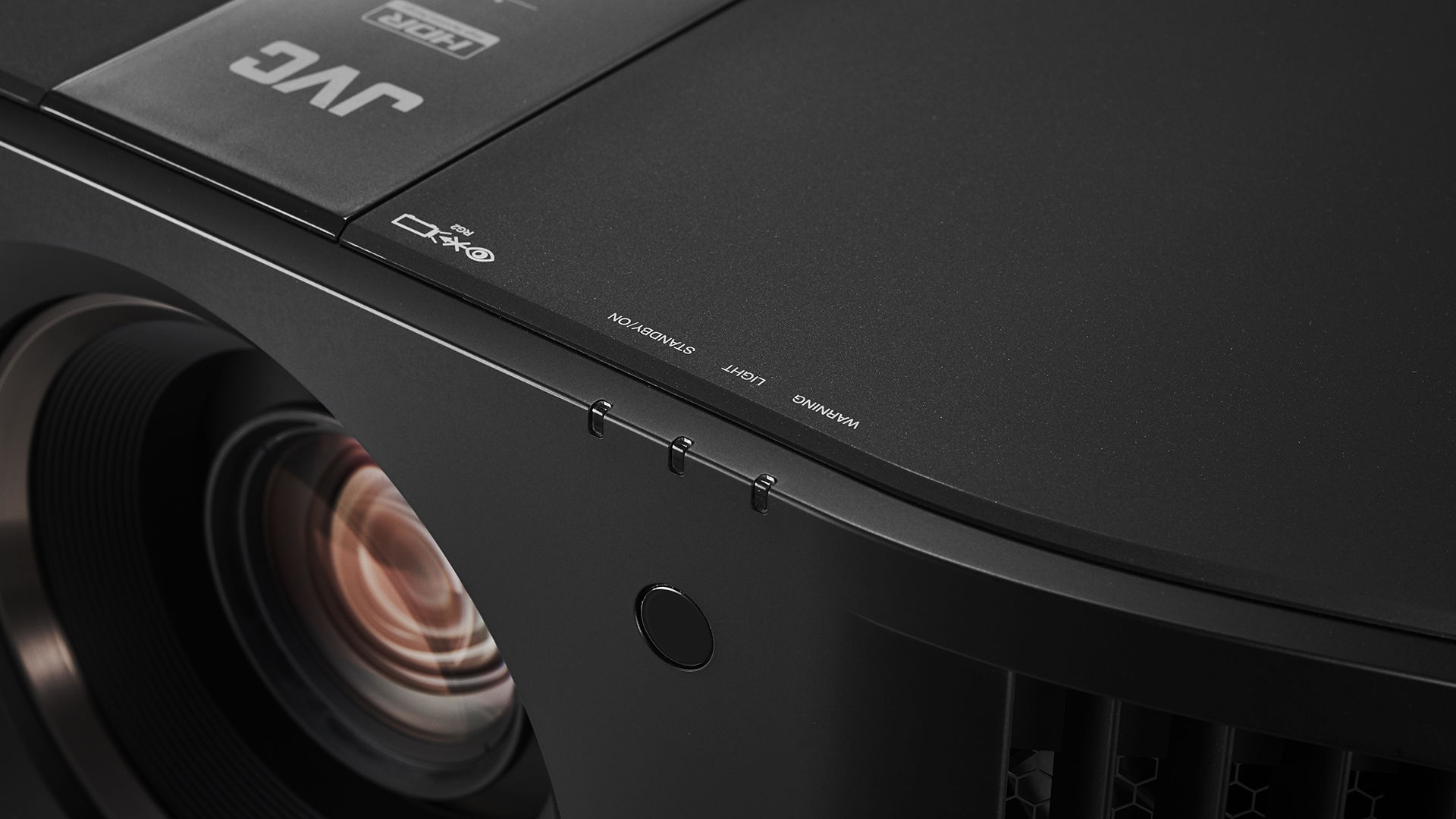
A high-end projector is as much a commitment to space and flexibility as it is to cost. The JVC DLA-N5 is around 50cm wide and deep, and weighs 19.6kg. It’s a big machine with proper installation requirements and, though it fits on our racks without a problem, make sure to do the pre-planning on your home cinema space.
Its 17-element, glass lens can focus an image between 60in to 200in with a 100in picture possible when projected at a distance of between 3.16m to 6.45m. Focus, zoom and the lens shift – which can move a 16:9 picture by 34 percent horizontally and 80 percent vertically – can all be done from the compact remote control.
The handset is backlit and offers shortcuts to HDR, motion processing, picture enhancement, colour space and other handy menus. The four adjustable legs on the underside of the projector also help get the picture aligned.
On the rear are the connectivity options in the form of two HDMI 2.0 ports. The USB socket is for service only and you’ll need to buy the RF 3D Synchro Emitter PK-EM2 and some glasses if you want to watch in 3D. The only notable absence is a motorised lens cover – the removable plastic cap is not particularly premium and could knock the focus off slightly when taken on and off, if you’re not careful.
Features
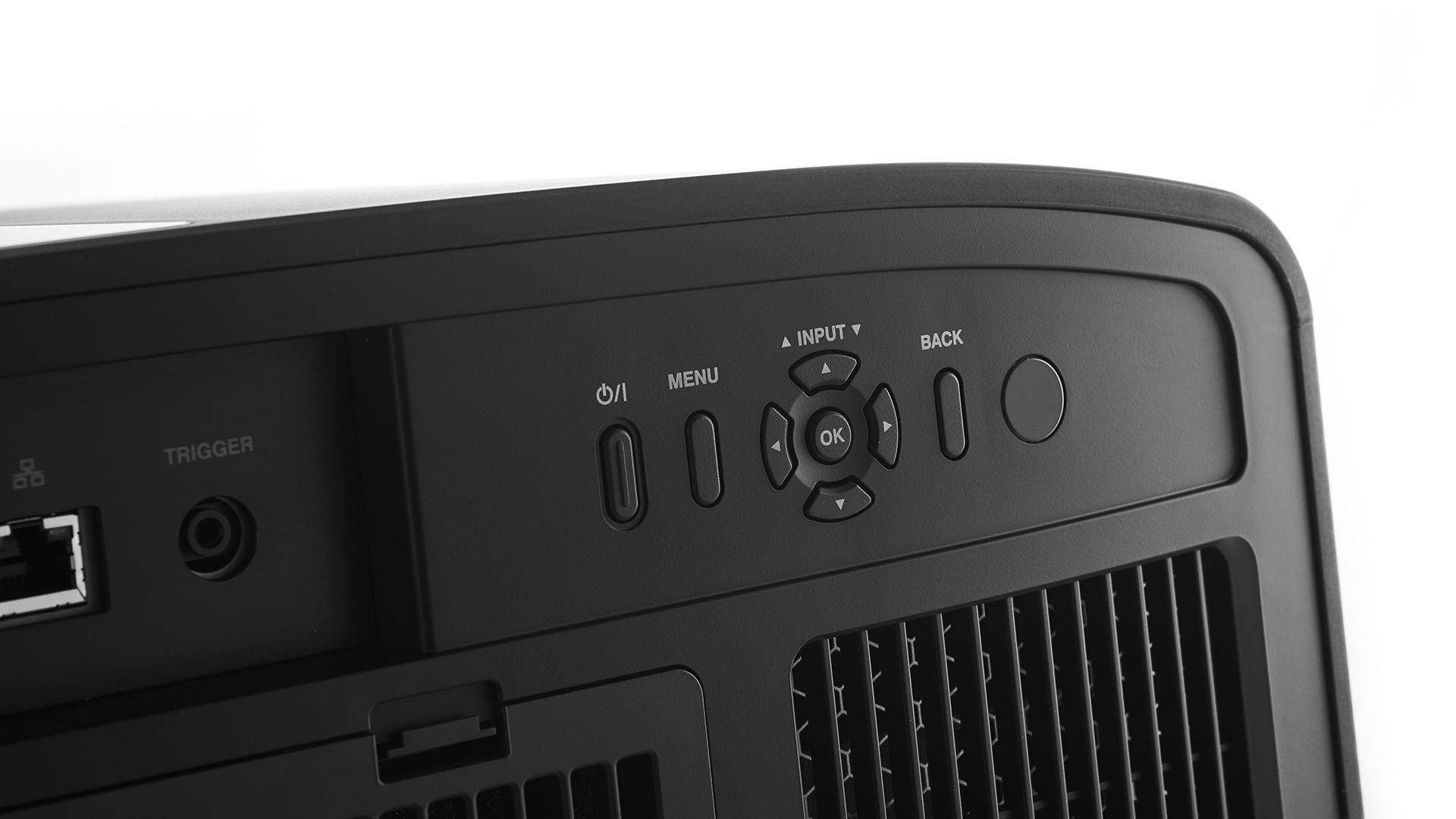
With 1800 lumens brightness, the JVC DLA-N5 is a lights-off projector. You can choose to manually set the aperture size to make the picture even darker, but either left alone or set to one of the two auto modes will do just fine. Both Auto 1 and Auto 2 make adjustments in real-time according to the light levels required for each frame. The first favours subtlety and the second a more dramatic contrast, but both are well chosen and there’s never any distraction of the picture changing or the noise of a motor driving it.
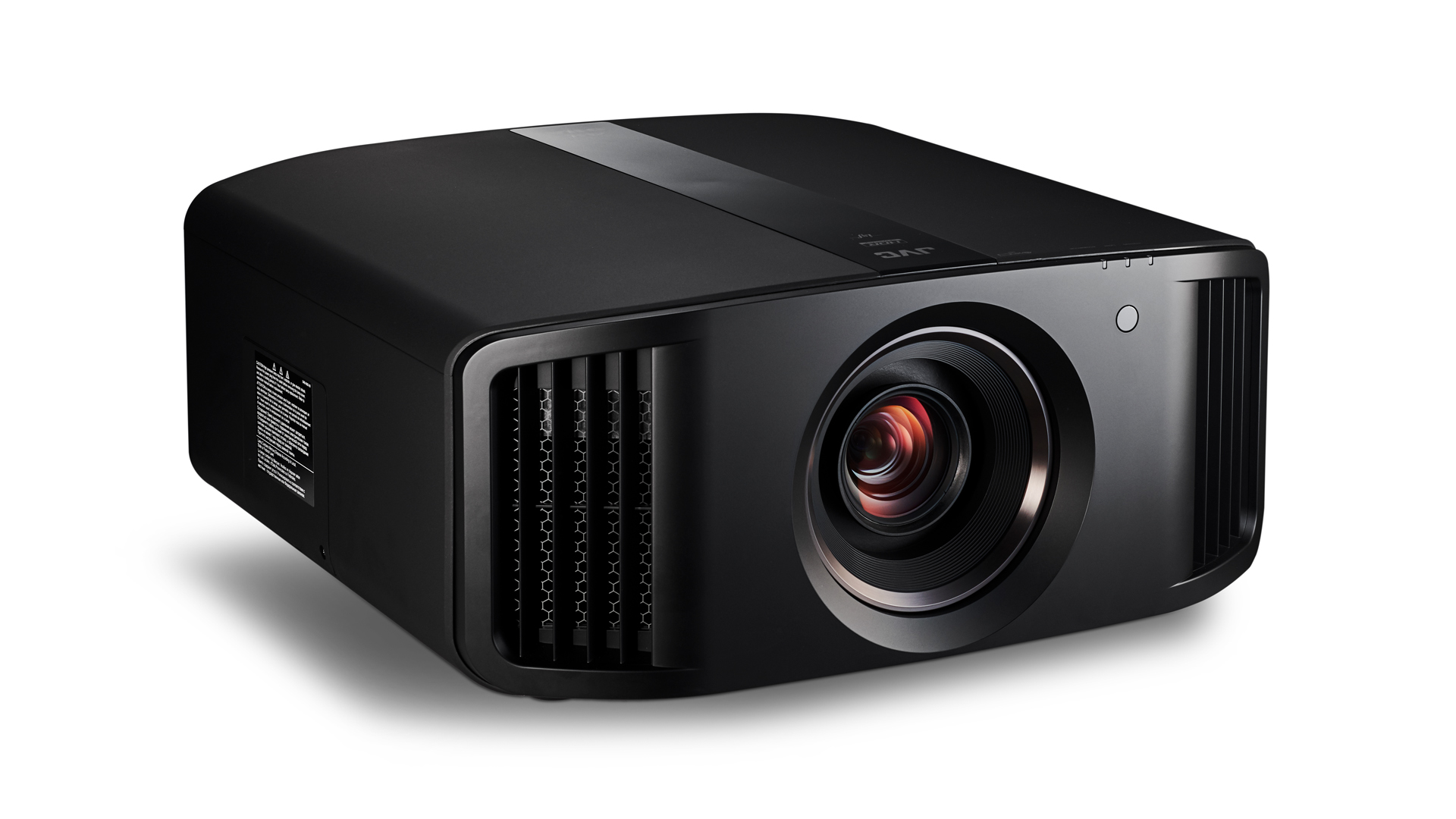
Type 0.69-inch native 4K D-ILA device (4096x2160) x3
Finishes x2
HDR formats HDR10, HLG
Fan noise 24dB (Low mode)
Max brightness 1800 lumens
Lamp life 4500 hours (Low mode)
Contrast 40,000:1 (native), 400,000:1 (dynamic)
Dimensions (hwd) 23.4 x 50 x 49.5cm
Weight 19.6kg
You can expect to get around 4,500 hours of use from the bulb with Lamp Power set to Low. However, as we’d recommend watching in High, you should plan on having to replace it sooner than that. Staying away from the eco mode means a little more fan noise too – JVC claims it's 24dB with the lamp on Low. It’s more noticeable in High, but the sound melts into the background once your film is playing.
There’s some HDR support (HDR10 and HLG) but, as with most projectors, HDR10+ and Dolby Vision are off the menu. JVC has continued to make HDR improvements to its D-ILA projectors on this front, however. The most recent firmware update added a feature called Frame Adapt HDR. It allows the projector to analyse any incoming video content and adjust the dynamic range on a frame-by-frame basis to optimise the light levels on-the-fly. Whether your source is on a disc or otherwise, it doesn’t have to rely on any metadata in the material itself.
JVC has announced further improvements to Frame Adapt HDR for the coming months with a feature it calls the Theater Optimizer. We’ll provide an update here when available. Gamers should take note of the Low Latency mode, which keeps the display as responsive as possible without wrecking the quality of the image.
Setting up the projector is easy, thanks to the handy test pattern and easily controllable lens. The on-screen menu system is uncomplicated and will help memorise ten different installation arrangements, just in case you’ll be moving the N5 around between a few regular locations. There’s also scope to download JVC’s calibration software to work with external devices.
Picture
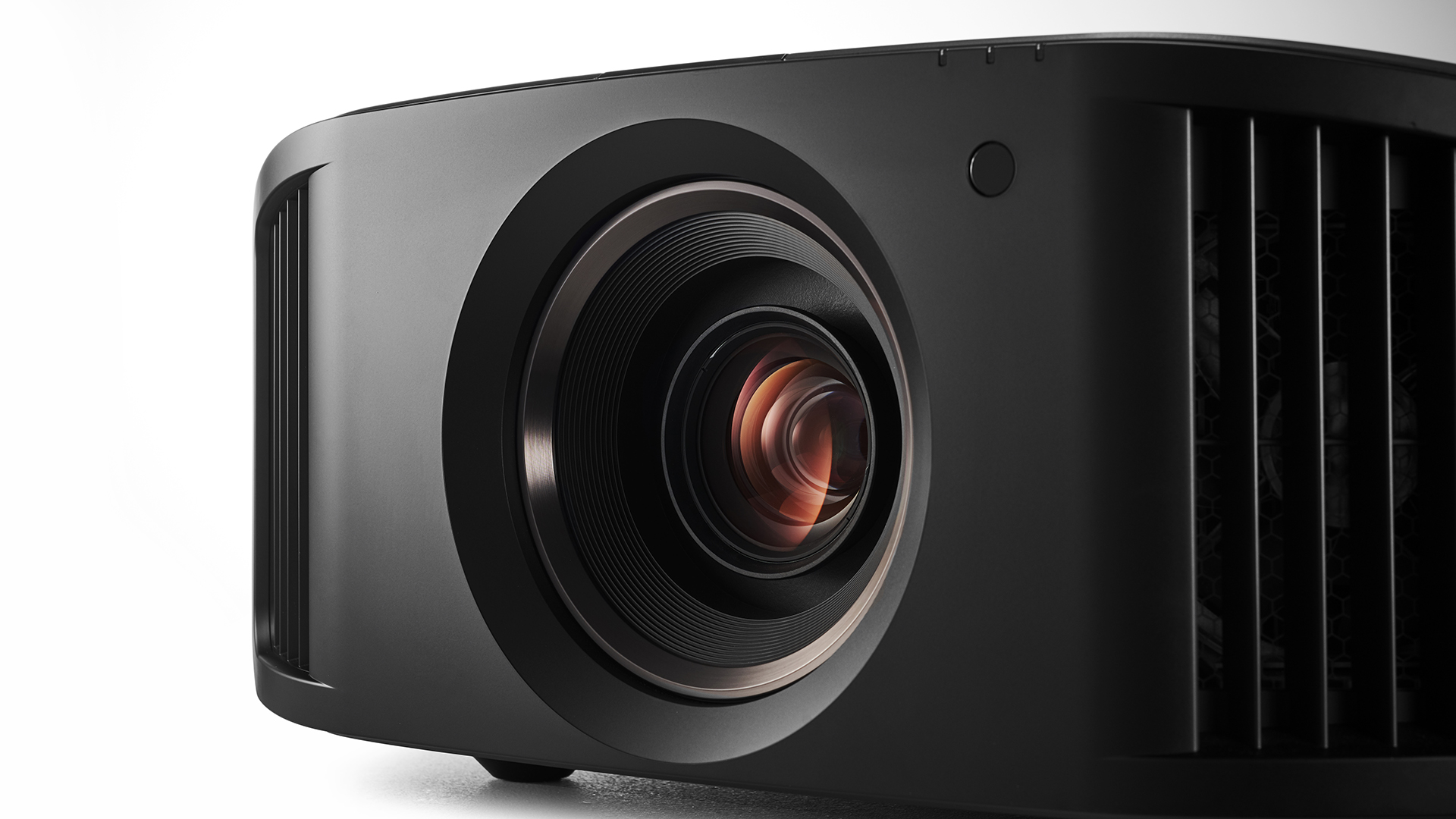
Whether it’s the aperture, the HDR levels or the way contrast is processed, JVC offers users the choice of doing things manually or leaving it up to the projector. Whatever you choose, the DLA-N5 gives you an exceptionally good performance.
Frame Adapt HDR and HDR10 are the picture modes to choose when viewing 4K HDR material, with both ensuring that all eco modes are switched off and that the projector is working hardest to create its finest picture.
Thor: Ragnarok in 4K HDR is simply stunning on our big screen and reference system. Many lower spec projectors do little justice to the tricky opening sequences, but the contrast handling of the DLA-N5 turns the normally dingy skirmish in Surtur’s underground lair into a rare treat. The bright spots of fire are full of complex colour and the whole image is consistent and sharp.
When the craggy caverns are flooded with the fire giant’s near-black minions, each one is clearly discernible and none of the fight action is lost to the shadows. Set Clear Motion Processing to Low, and there’s a sweet spot between judder and over-smoothing, meaning you can enjoy the movement without anything jarring.
Once Hela returns to Asgard, you can really appreciate the D-ILA with its smooth production and black depth. It’s still short of what you get in darkness from an OLED TV or pricier projector alternatives, but this performance is more than good enough for the price.
There’s a brilliant sense of dimension to the character costumes with so much more monochrome scale available. If you crave even more of that blackness, then try setting the HDR level to Low, knocking the brightness slider down a notch or two, or even switching the lamp level to Low. However, you will trade off a little dark detail in return.
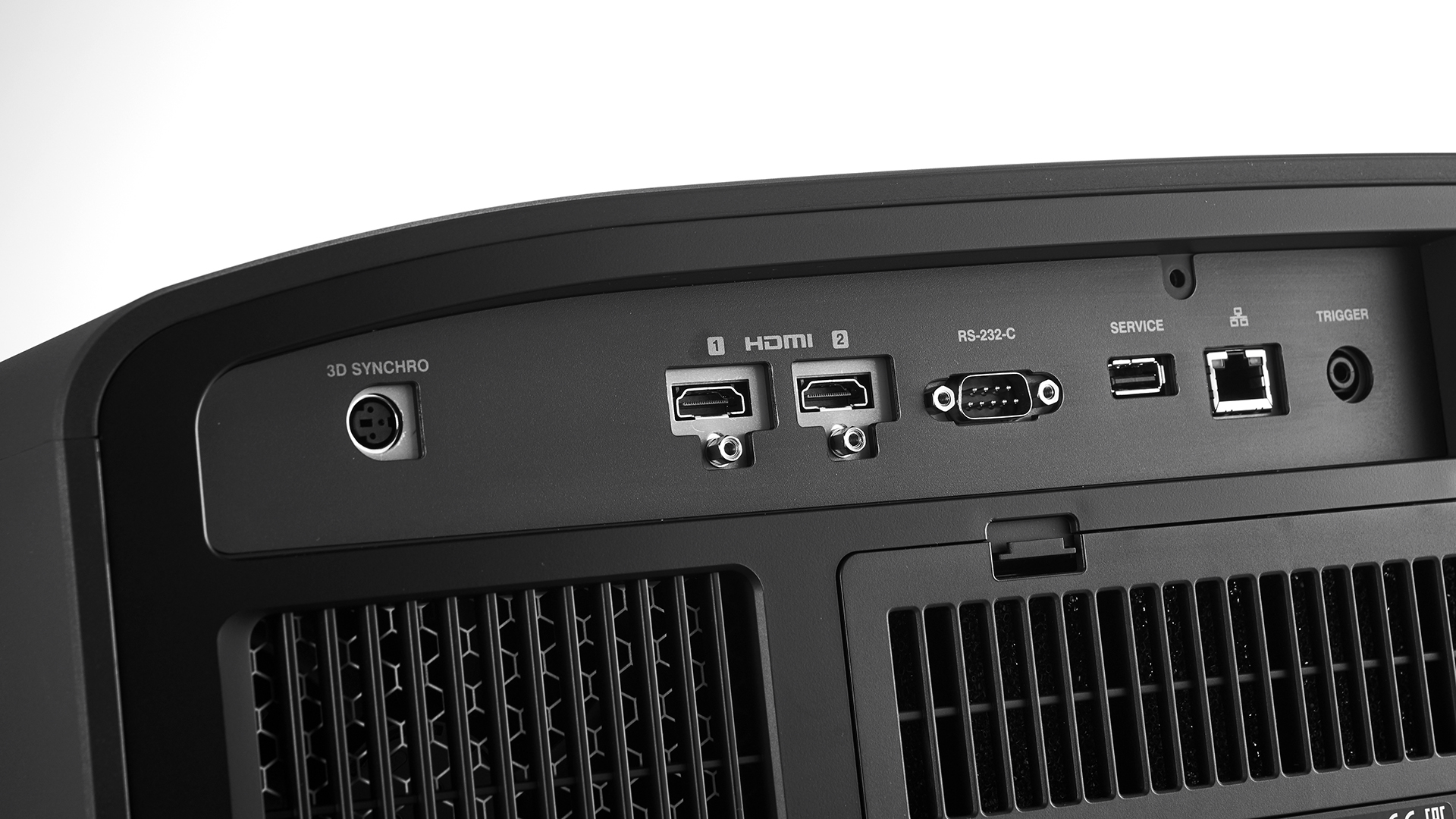
Colour production on this machine is stunning and effortlessly nuanced, with skin tones natural and expertly blended. In the Contest of Champions scene, the reds and blues of Thor’s cloak and armour are vivid, Loki’s tunic is a superbly textured emerald leather and the Grand Master’s gold glittered gown looks every bit the garb of a power-crazed space tyrant.
Even dropping down to Full HD with Star Wars: The Force Awakens, on Blu-ray, those colours are still a sight to behold. The more pastel hues of Jaku at sunset are a delight. Each shade moves sweetly into the next, from orange to peach to pink, adding a brilliant sense of place to the on-screen adventure.
There’s virtually no noise to spoil these large blocks of colour and we’d recommend taking the picture enhancer up to give more edge to the scene. Leave the upper limits alone and a little of the noise reduction technology will go a long way.
The N5 has no problems scaling the detail into a 4K picture either. There’s still enough sharpness to make out the almost-white ship heading off into the upper atmosphere in the distance, and to pick up the grain of the sand as the desert stretches out to the horizon.
The only real note of warning is that the N5 doesn’t upscale standard-def content to full screen size. Any content below 1920 x 1080 will be scaled by four times the native resolution of the source. So, a 480p source at 720 x 480 will be displayed as 1440 x 960 and only fill about one-ninth of the display.
That’s not ideal, but there are few situations we can think of where there won’t be an AVR, Blu-ray player, set-top box or other device in the chain that can’t do the upscaling work instead. So, unless you are after a big screen daytime TV experience, it's nothing to worry about.
Verdict
The JVC DLA-N5 certainly costs a fair amount, but it still sits short of where the law of diminishing returns kicks in. Even at this price, it feels like there’s value to be had with a large-scale picture that’s so strong in HDR and colour care.
Its bigger, pricier siblings in the JVC D-ILA family are better and blacker, but there’s enough shading skill and depth of darkness even here to produce an incredibly involving and three-dimensional feel whether at 4K or Full HD. This is one of those products that we wish we had the space and the funds to own.
SCORES
- Picture 5
- Features 4
- Build 5
MORE:
Read our Sony VPL-VW290ES review
Read our Epson EH-TW9400 review
What Hi-Fi?, founded in 1976, is the world's leading independent guide to buying and owning hi-fi and home entertainment products. Our comprehensive tests help you buy the very best for your money, with our advice sections giving you step-by-step information on how to get even more from your music and movies. Everything is tested by our dedicated team of in-house reviewers in our custom-built test rooms in London, Reading and Bath. Our coveted five-star rating and Awards are recognised all over the world as the ultimate seal of approval, so you can buy with absolute confidence.

